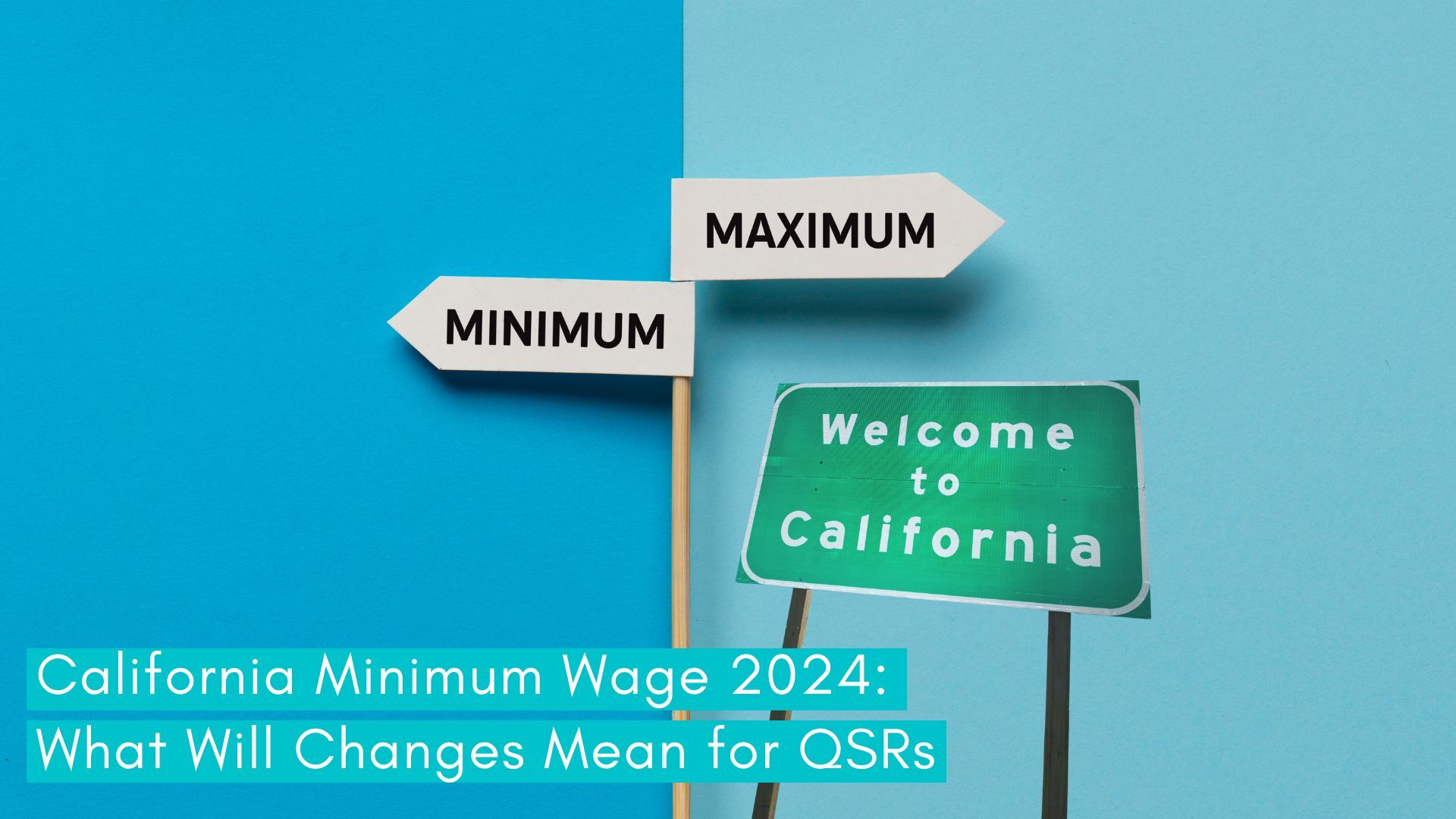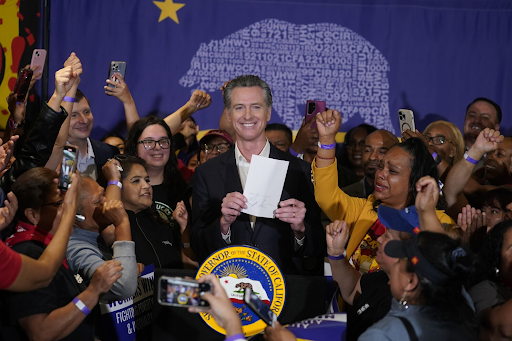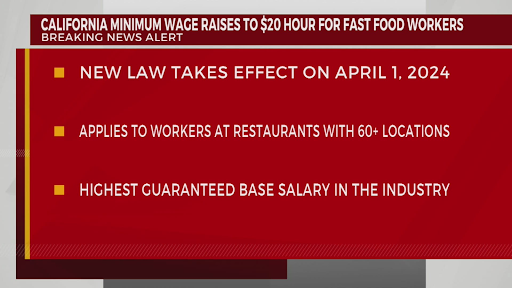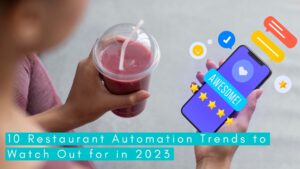As the old saying goes, ‘money makes the world go round.’ California is definitely feeling this at the moment, with the incoming minimum wage shaking up the world of hospitality across the state.
For QSRs, it’s a constant back-and-forth between employers who want (and need) to maximize profit-making opportunities and employees who expect wage hikes to help with the cost of living. As of 2024, the latter will become a reality.
Labor costs already hover at around 30% of a QSR’s spending, so the food service industry will have to prepare ahead of the news of a wage increase in California.
While this presents opportunities for employees to have a better quality of life amongst inflation hikes, it further strains QSRs with limited resources and funds.
What You Need to Know About the California Minimum Wage 2024
Just as employers are getting used to a $15.50/hr wage, the State of California recently passed a bill to increase the minimum wage to $16 per hour in January 2024.
Then, QSRs face further challenges as the minimum wage for fast food employees at limited-service restaurants with over sixty locations will increase to $20 per hour on April 1, 2024.
The hourly wage will continue to rise annually until 2029 at a rate tied to the Consumer Price Index, which measures the overall change in consumer prices. Ultimately, the minimum wage in California (especially for fast food workers) is far higher than the US average of $13.43 for fast food workers.
There are over 550,000 fast-food employees across 30,000 California locations, and many could be impacted. Especially as the new law also affects the minimum salary employees can earn to meet the overtime exemption test, which means they don’t get overtime pay if they earn no less than two times the state’s minimum wage for full-time work. Therefore, the white-collar exemption minimum annual salary in California will increase to $66,560 per year.
What Do You Need to Do Now?
- Check if your QSR is legally classified as a ‘national fast food chain.’ If so, this law will affect you.
- The $20 wage comes into effect on April 1, 2024. There is no relief or grace period, so now’s the time to get your accounts in order.
- Make sure you update wage statements to show the new pay and overtime rates, plus issue all hourly employees a new Wage Theft Protection Act Notice.
For QSRs, this is the perfect time to reassess your needs as a business and bring in more efficient operations.
What Will the California Minimum Wage Mean for Employees?
It is state law to pay workers the minimum wage, even when employees are paid at a piece rate. Anyone who doesn’t receive the right amount can file a wage claim with the Labor Commissioner’s Office.
Of course, employees will likely be happy when they see a higher figure on their wage slips every month. There’s a good reason for this:
- Improved earning potential – With the cost of living crisis afoot, higher wages give employees a better quality of life and may alleviate some financial stress.
- Enhanced job satisfaction – Happy employees are 77% more likely to stay with their employer, helping QSRs create more long-term career opportunities and avoid high turnover costs.
- Flexible or reduced working hours – Some employees might choose to work less if they earn more, which is ideal for people who want to spend more time with their families.
Challenges and Opportunities for QSRs
While the new law is great news for minimum wage earners, it gives QSR business owners a lot of challenges and opportunities to think about.
Challenges
- Profit margins taking a hit – Labor costs are already sky-high in the QSR industry – at 30%, there isn’t much wiggle room.
- Operational costs – Spending more on wages might mean struggling QSRs make up the difference elsewhere, such as implementing price increases for customers or lowering service quality.
- Wage compression – Increasing the minimum wage means there’s a smaller gap between lower- and higher-income earners, making salary increases less appealing. Therefore, a minimum wage boost can create a ripple effect across all layers of your business.
Opportunities
- In-house opportunities – The majority of fast food workers are the primary providers in their families, and better wages mean improved working conditions and career prospects.
- The spark of change – Being more efficient with labor costs and usage (for example, reducing your headcount by implementing automation technology) means you can pay higher salaries to your smaller workforce. This provides a chance to implement new solutions and improve the current ways of working.
- Adapt and overcome with technology solutions – Running a successful QSR isn’t a linear journey. You’ll have highs and lows, but ultimately, the new law is another opportunity to adapt to challenges and reap the rewards at the end. This is the time to implement tools to run a more efficient workforce and therefore deliver a highly consistent service for your customers. One of the proven solutions to build efficiency is Voice Ai for order taking from Hi Auto.
Strategies for QSRs to Adapt and Thrive in Preparation of the California Minimum Wage 2024
Here are three essential strategies you can implement now to get ready for the new law in 2024.
Streamlining Operations
Whatever happens, cutting corners is the worst-case scenario. Your customers have high expectations about the consistency, quality, and speed of your service, and cutting corners will undermine your reputation. It is possible to achieve the goal of improving efficiency and consistency while the cost per hour of employees increases.
Voice AI for automated order-taking is a preferred way by franchisees to add efficiency to their operations and reduce recruiting and training efforts. As automation technology can work 24/7, it allows you to cope better with unexpected increases in the volume of orders by freeing up the person at the drive thru window and re-allocating them to the back of the house while the voice AI takes over. You can customize the tone of voice and wording on a day-by-day basis, meaning you can deliver a consistent service.
When you are understaffed, voice AI helps you better control your scheduling as you can open and close the restaurant with one less person and increase staffing later in the day. For example, instead of adding an employee for every $100 of forecasted sales, you can add someone every $120.
Embracing Technology
57% of hospitality business owners say that bringing in new technology like restaurant automation has been critical to their survival in recent years.
Although you might be concerned about making further investments when facing imminent labor cost hikes, remember that most technology solutions only require a one-time purchase – a drastic reduction compared to multiple salaries.
Conversational AI solutions, like Hi Auto, can provide fast and accurate service 24/7 at the drive-thru, which completely replaces the need to hire staff members to supervise your lanes. Implementing other technology like food preparation robots and automated table reservations could save your employees time, too.
Incorporating such solutions will allow you to pay higher salaries whilst reaping the benefits of a much more efficient and successful workforce.
Reducing drive-thru headcount will further reduce labor costs and allow you to re-assign your team members to other high-value tasks.
Worried about losing the ‘human touch?’ 58% of people aged 18-38 say they’re more likely to return to restaurants that use automation.
Basically, human employees aren’t as desirable for your customers as you might think. Of course, customers like to see a friendly face in your restaurant, but what they really care about is the speed, accuracy, and taste of their order – and all these things can be optimized using technology.
Employee Training and Retention
Staff turnover costs the average restaurant $150,000 annually, partly attributed to the QSR industry’s 75% churn rate. It costs around 50% of an employee’s salary to replace their role when they leave, so it’s much more cost-effective to focus on retention rather than recruitment.
Learning and development opportunities like comprehensive training programs are a great way to engage staff and prove that you are committed to investing in their long-term future. As you pivot to new technology like AI and automation, make employee training part of the digital transformation journey, too. By training staff on how to work with new tech, not against it, they will have total knowledge and confidence in using new systems to their advantage.
Stay Ahead of the Game With Technology
Your QSR will inevitably face some turbulent times as you dig deeper into your pockets to prepare for California’s minimum wage increase. Thankfully, the upcoming financial headwinds shouldn’t push you to cut corners and compromise quality.
Instead, investing in new technology can help you optimize and streamline your QSR operations and identify where you can reduce your headcount and save on labor costs.
Brands like Checkers and Rally’s have already introduced Hi Auto’s drive-thru AI technology in over 350 restaurants, and Lee’s Famous Chicken Recipe has enjoyed a 94% accuracy rate using Hi Auto – even higher than the accuracy rate of human servers.
The 1st April 2024 is not far away. Get started on your digital transformation journey today and see how technology investment can prepare you for a future that relies less on employees and more on operational efficiencies.
Contact us to give Hi Auto a try.








